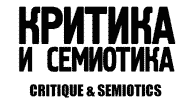Search
| # | Search | Downloads | ||||
|---|---|---|---|---|---|---|
| 1 | The frontispiece of Leviathan or The Matter, Forme and Power of a Commonwealth Ecclesiasticall and Civil (painted by the French engraver Abraham Bosse in 1651 in collaboration with Thomas Hobbes) is an important component of the political work. The figure of a “huge man” holding a sword and a bishop’s staff marks the identity of secular and spiritual authority. The richness of Hobbes’ work and the multitude of themes it contains force us to turn to the frontispiece as a visual source. This paper is particularly interested in Hobbes's demonology. The choice of this theme is explained by the reference to the context and the work of the English philosopher himself. In terms of the context, the seventeenth century appears as the historical period which unfolds the debate about demonology in England. From the point of view of the text, it is confirmed that the work is structured in such a way that Hobbes transitions from the themes of human nature, politics and theology to a critical dissection of demonological views. The relationship between demonology and the frontispiece is contradictory. On the one hand, the image of Leviathan is associated with demonology. On the other hand, the image of the “huge man” does not contain explicit references to demonology. In order to reconcile this contradiction, I identify the main interpretative aspects of the frontispiece. First of all, it is necessary to understand how the frontispiece outlines Hobbes’s political model. I further turn to the topic of images in Hobbes’ works to highlight their main functions within political philosophy. Finally, building on the previous tasks, I identify the interpretive aspects of the frontispiece in relation to demonology. The main visual components of the frontispiece are the reference to a verse from the Old Testament, more specifically the Book of Job, the symbols of secular and spiritual authority (sword and bishop’s staff), and the people who make up the body of the “huge man” (“μάκρος ἄνθρωπος’”). Thus, the image of Leviathan reflects the main points of Hobbes’ text about the assembly of citizens to conclude a social contract. The ecclesiastical symbolism of the image creates a sense of Leviathan’s power through rights such as excommunication. It is noticed that people turn their gaze to the face of Leviathan (sovereign), to whom they owe the coming of peace and protection. The concentration of the gaze on the sovereign also demonstrates the psychological nature in the civil state. Further, I note that the image carries the functions of remembering, honouring and arousing fear of violent death. I show that one of the visual components of the frontispiece is the set included in the body of Leviathan. This component is associated with the demonological logic about the plurality of the devil, which does not have a single face. A curious point is that humans look at Leviathan through his eyes and are supposed see a world devoid of supernatural entities. As a result, we wonder: could the image of Leviathan be used against Hobbes’ political conception, given the polysemantic nature of the frontispiece? Keywords: Thomas Hobbes, frontispiece, Leviathan, demonology, history of philosophy | 208 | ||||










